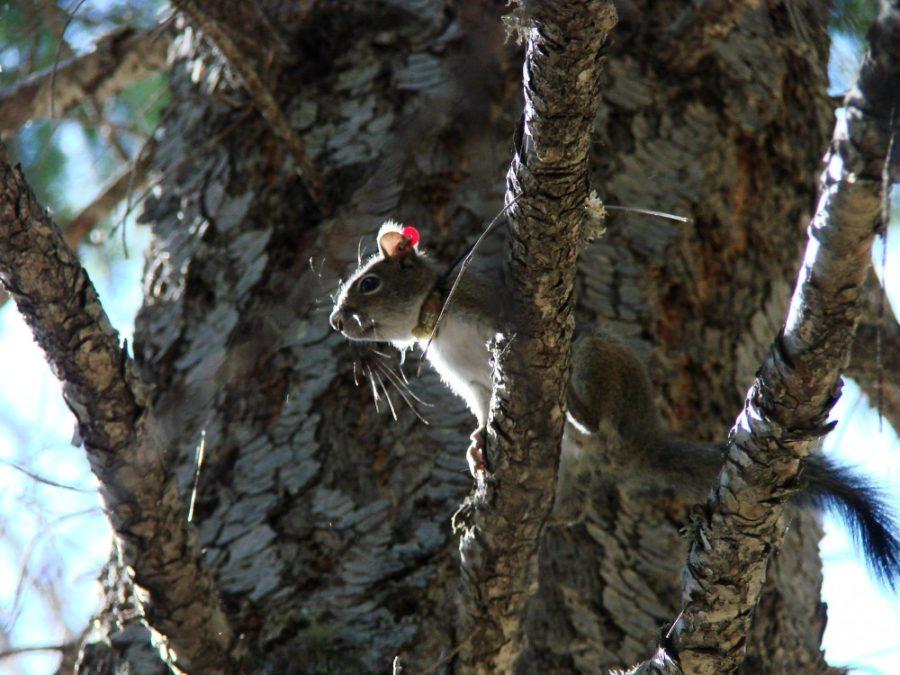Imagine standing at the top of one of Tucson’s Sky Islands, 10,720 feet above ground, surrounded by moist, green forests of pines and Douglas-firs.
One such Sky Island is Mount Graham, and at the stroke of dawn, UA researchers hop into their vehicles and venture into these forests to collect valuable information on one special endangered animal, the Mount Graham red squirrel.
According to Dr. John Koprowski, a professor of wildlife-fisheries sciences and director of the Mount Graham Red Squirrel Project, the mountain has an isolated population of just 300 individuals of the MGRS, a red squirrel subspecies named Tamiasciurus hudsonicus grahamensis.
A paper published in the 1960s once declared the MGRS extinct, and UA astronomers began plans in 1988 to construct telescopes in the region where the squirrels used to inhabit. But, in 1972, hikers observed the squirrel before the construction of the UA telescopes was complete.
“As a result, there was a conflict,” says Koprowski, “because the mountain was both a habitat for a federally endangered species as well as an ideal location for people interested in building telescopes.”
The UA instituted the MGRS Project in the 1980s to resolve this dispute, which allowed the scientists to conduct both conservation biology and astronomy research in the same region without invading the territory of endangered squirrels.
Insects and forest fires have damaged the MGRS habitat over the years which has motivated researchers to learn as much about these squirrels as they can.
With just 300 of the endangered squirrels inhabiting the highest and researched elevations of the mountain, “We can learn,” Koprowski said, “to manage and conserve rare species.” Using both radio monitoring and live animal capture, the MGRS team can observe the population’s growth and decline.
In particular, “radio telemetry collects a lot of our animal tracking data because our presence will not influence an animal’s behavior,” said Melissa Merrick, doctorate candidate and wildlife biologist. This technique allows MGRS researchers to estimate an animal’s location via radio signal such that humans do not impose on animal territory.
After years of observation, researchers found this subspecies is unique for being a “larder hoarder,” which collects things and stores them in single specific locations for future use.
“Most squirrels you see in stores or TV commercials are species that collect seeds under a tree and spread them out, which is called ‘scatter hoarding’,” Koprowski said.
Scatter hoarders, on the other hand, spread out food so predators have a hard time finding it. If anything were to approach the territory of a larder hoarder, such as the MGRS, the squirrel would show aggressive behavior to protect their resources without hesitation.
MGRS researchers say the squirrel’s population fluctuates seasonally between spring and winter, but stabilize annually. As a single subspecies isolated at such high elevations, however, researchers warn that these animals may be another signal of climate change.
Follow Pearl Lam on Twitter.









